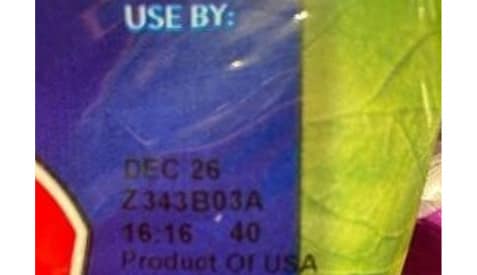Listeria Outbreak Linked to Packaged Salads Produced by Fresh Express
Fast Facts
- Illnesses: 10
- Hospitalizations: 10
- Deaths: 1
- States: 8
- Recall: Yes
- Investigation status: Closed

What You Should Do
Prevent Listeria
- Find out if you are at higher risk for getting sick with Listeria
- Learn which foods are more likely to contain Listeria, and take steps to prevent getting sick
- Stay up to date on food recalls and outbreaks to avoid getting sick from eating contaminated food
Prepare Leafy Greens Safely
Vegetables, including leafy greens, are an important part of a healthy and balanced diet. However, they can sometimes be contaminated with harmful germs.
The safest produce is cooked; the next safest is washed. However, no washing method can remove all germs.
When eating raw leafy greens:
- Wash your hands, utensils, and surfaces before and after preparing leafy greens.
- Clean leafy greens before eating or cutting them.
- Discard outer leaves on whole heads of lettuce and any torn or bruised leaves.
- Rinse under running water and use your hands to gently rub the surface of the leaves.
- Dry with a clean cloth or paper towel.
- If the label on a leafy greens package says “ready to eat,” “triple washed,” or “no washing necessary,” you don’t need to wash the greens.
- Separate leafy greens from raw meat, poultry, and seafood.
- Refrigerate leafy greens within 2 hours. Refrigerate within 1 hour if they have been exposed to temperatures above 90°F (such as a hot car or picnic).
Page last reviewed: March 8, 2022
